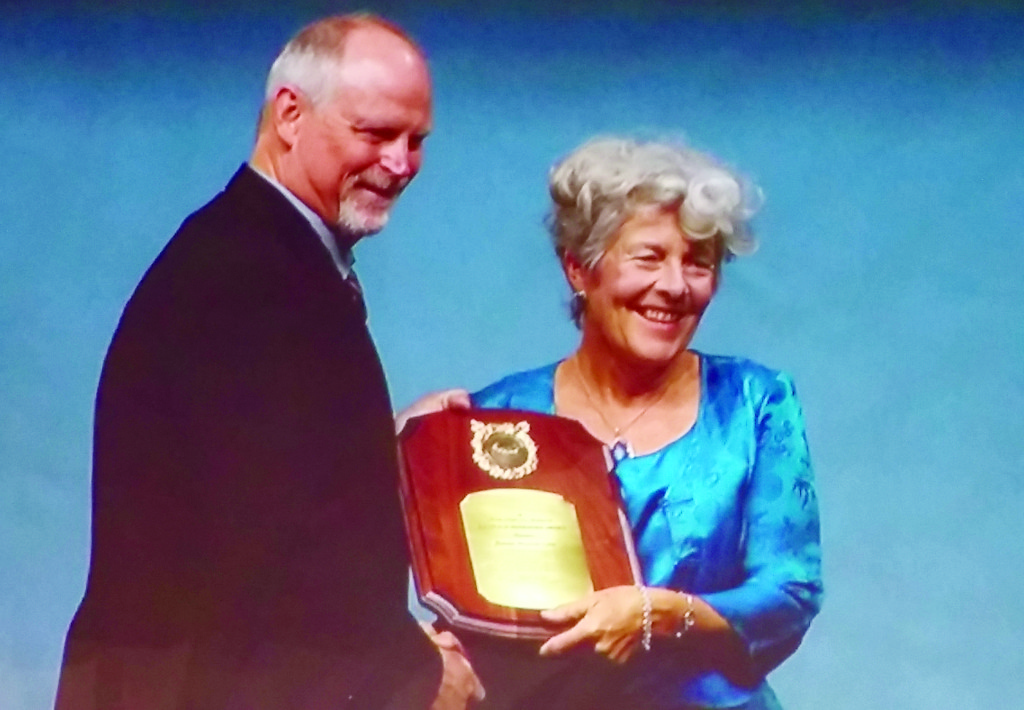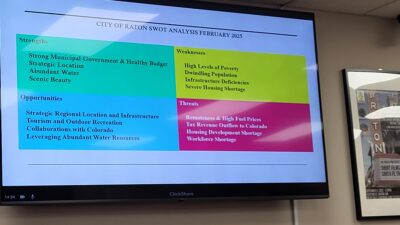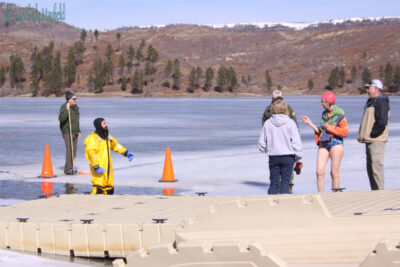by Bill Knowles HUERFANO COUNTY—Huerfano County resident and geophysicist, Heloise Lynn, has been awarded the Reginald Fessenden Award for her career work in the area of translating the anisotropic behavior of seismic waves. Her research can be found in 47 published papers that present an invaluable knowledge base for scientists, researchers, students, teachers, and exploration geophysicists, according to the award presentation from the Society of Exploration Geophysicists.
HUERFANO COUNTY—Huerfano County resident and geophysicist, Heloise Lynn, has been awarded the Reginald Fessenden Award for her career work in the area of translating the anisotropic behavior of seismic waves. Her research can be found in 47 published papers that present an invaluable knowledge base for scientists, researchers, students, teachers, and exploration geophysicists, according to the award presentation from the Society of Exploration Geophysicists.
Reginald Fessenden, a Canadian, was the first to lay out the principles of reflection seismology, a science used by many of the world’s energy exploration companies. The development of the discipline has allowed for the increased extraction of hydrocarbons from such areas as the oil and gas plays in Colorado, Texas, and the Marcellus formation in Pennsylvania.
Reflection seismology is interpreting sound waves that have been sent into the earth and bounced back by the formations and strata in the area the sonic waves were directed. Waves that come back lacking the expected symmetry are called azimuthally anisotropy, meaning that sound is not reflected uniformly from all angles of rock or mineral.
“With this information, geologists can determine stress in situ and vertical aligned fractures,” Dr. Lynn said. That makes it important for understanding areas that are prone to earthquakes. It can also be used to determine where deposits of oil or gas may be, as well as water.
Dr. Lynn began her career working with her father (also an earthquake seismologist), then went to Stanford majoring in seismology. After she received her undergraduate degree, she went on to earn a Ph.D. in conventional exploration seismics.
She joined Amoco in 1981. While working in their domestic Exploration and Production office in Houston, Texas, she was given a new type of data set to process, one that had defeated more experienced geophysicists.
Two crossing 2-dimensional lines of “shear data” had been recorded in the folded Appalachian Mountains of Pennsylvania. In the early days of shear-wave exploration, most geologists thought that such surveys should have a horizontal crossline source. This would create an “SH” reflection data. That was executed on both lines so that at the tie-point, the two lines had near-orthogonal polarization, or polarization at right angles.
Dr. Lynn produced, on each line separately, a well-defined subsurface image, clear down to 20,000 ft. This in itself was a triumph, since the Conoco Shear-Wave Group Shoot had demonstrated, only a few years previously, that most such data was uninterpretable.
Lynn, was not satisfied with her technical success, since the two images, at the tie point, did not tie each other. Working together with Amoco’s Tulsa Research Center, she concluded that this was the first observation ever of “shear-wave splitting” at near-vertical incidence. And she was able to explain why her success was consistent with the Conoco Group Shoot’s failures. This led directly to six years of intensive, secret Amoco development of shear-wave understanding and know-how before other companies began to catch on.
Lynn has also had a 30 year career with her own business, Lynn-Inc., a “boutique firm,” specializing in the design, processing, and interpretation of multi-azimuth and/or multi-component seismic data sets. She also worked with developing a wide-azimuth (land) 3D P-wave survey. The techniques developed are now used widely by energy exploration companies looking for petroleum deposits in basins across the globe.
Dr. Lynn has continued to develop techniques that are being utilized by energy companies to find the “sweet spot” in oil bearing areas, thus bringing greater efficiencies to energy extraction teams. Rather than drilling many wells and fracking all over, the exact spot for drilling can be determined saving time and money.
The Reginald Fessenden Award is an industry award that can be likened to an Oscar given for technical or scientific achievement. Lynn’s work has helped increase efficiencies in the field of energy exploration by establishing interpretive understandings for the use of sound waves to “see” into the earth and arrive with an accurate picture.






